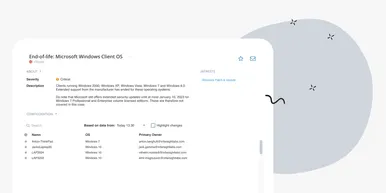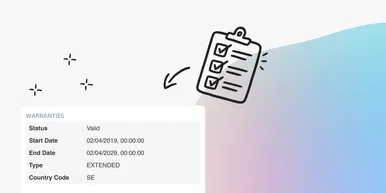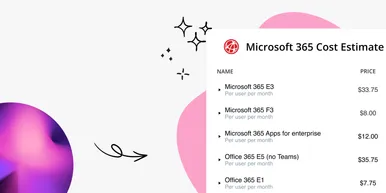
Effective Configuration Management Requires Transparency Across All Systems
In modern IT environments, the gap between reported and actual configuration is bigger than most people realize. In this article, I explain why accurate inventory requires collecting data about each asset from multiple sources — not just one.
In a perfect world, every policy, security setting, client update, or provisioning task would apply exactly as planned. Automatically. Effortlessly.
But that’s not how reality works.
Today’s IT environments typically include:
- hundreds or thousands of clients, servers, and accounts
- multiple management platforms
- automation via scripts and MDM policies
- different teams, roles, and responsibilities
- multiple standards and reporting formats
- agents that sometimes work — and sometimes don’t
There are many moving parts. And while every single configuration can technically be verified manually, it’s neither realistic nor feasible for an IT department to log in to every device or system to confirm that everything looks right.
This is why it’s critical for IT teams to have a tool that gives them an accurate and consolidated picture of what’s actually true in their environment.
Let me share an example that has become increasingly common in the latest weeks.
Migrating from Windows 10 to Windows 11
The migration is planned well in advance. Updates are deployed via SCCM or Intune. Clients report that everything is up to date. The project is marked as completed.
But when you open vScope, which automatically collects configuration data from multiple sources, you suddenly see several devices still reporting Windows 10. Devices that SCCM claims are already upgraded.
What’s going on?
In this case, Active Directory is still reporting Windows 10 for several clients, even though the upgrade should be completed. Something broke in the synchronization between platforms.
This kind of discrepancy is exactly what happens when systems aren’t fully aligned.
Why does this matter?
Devices end up in the wrong update groups
If SCCM thinks a device is running Windows 10:
- it won’t receive the correct Windows 11 patches
- it won’t get the right GPOs
- it won’t receive the appropriate security policies
- it may end up in the wrong maintenance window
Result: The device may miss critical updates — for no valid reason.
Automation breaks down
Conditional Access, Autopilot profiles, update rings, and MDM policies all rely on accurate device attributes: OS version, patch level, model, ownership, and more.
If those attributes are wrong, the device ends up in the wrong group.
This can lead to:
- the wrong applications being installed
- incorrect network policies
- incorrect encryption requirements
- the wrong antivirus or security baseline being applied
The issue isn’t the OS version itself, it’s everything that depends on that data being correct.
Multiple realities — and why it matters
The important part isn’t whether a device actually runs Windows 10 or Windows 11. The important part is that different systems believe different things.
Every decision, policy, security control, and automation is driven by the data reported from surrounding systems. When that data is wrong, the entire IT delivery model becomes unreliable.
vScope shows when systems disagree
What makes vScope unique is that it collects information about an asset from multiple data sources and presents it in one place. This gives you a unified, comparable, and verifiable view of how devices are truly configured.
For clients, vScope pulls data from:
- SCCM / MDM
- Active Directory
- Azure AD / Entra ID
- Microsoft 365
- the operating system itself (e.g., PowerShell)
- network and infrastructure sources
… and can easily identify situations where:
- AD says one thing
- SCCM says another
- the OS says something completely different
It’s only when you see all sources together that you understand what’s actually true. And that insight supports many essential processes across your IT organization, including:
- security
- updates
- operational stability
- compliance
- licensing
- budgeting
- troubleshooting
- planning
Summary
IT environments consist of many systems reporting data in different ways and on different schedules. Mistakes happen — and when they do, it’s crucial to quickly identify and resolve inconsistencies.
Without transparency across systems, it’s almost impossible to know whether a configuration has truly been applied or just appears to be.
vScope gives you the visibility you need by collecting, comparing, and visualizing configuration data from across your entire IT environment.
Want to see how it works in practice? Book a demo and we’ll show you how vScope can help you take control of both configuration management and data quality.
Related blog posts
All posts
How Lifecycle Cost Analysis Helps You Make Smarter IT Decisions
IT teams are under constant pressure to deliver more with less. But without understanding the true cost of every server, license, or laptop, even the most well-planned budgets can spiral out of control.

How Microsoft's New Licensing Model Impacts You - and How to Prepare with vScope
Starting November 2025, Microsoft will remove volume discounts in Enterprise Agreement, MPSA, and OSPA. In this article, we explain what the change means for your organization, and how vScope helps you gain full visibility and control of licenses and costs across your environment.

Last Day for Windows 10 - Are Your Clients Ready?
As of October 15, 2025, Microsoft officially ends support for Windows 10. In this article, we explore what that means, why Microsoft is making this change, and how you can use vScope’s inventory and prebuilt insights to stay ahead.

Warranty Management in Practice: Checklist, Pitfalls, and How to Automate with vScope
Learn how to manage device warranties the right way. We walk through a step-by-step checklist for manual warranty tracking and how to automate follow-ups, reports, and alerts with vScope Discovery.

How to Optimize Microsoft Licenses to Save Both Money and Time
Keeping track of Microsoft licenses is one of the biggest challenges for many IT departments. With vScope’s new pre-packaged content, you gain better visibility and can easily identify hidden costs, inactive accounts, and overlapping licenses.

Optimize Your Database Environment: Pre-Built Content for Performance and Savings
Databases are the backbone of nearly every modern organization. From customer data to transactions and internal systems, your business relies on their performance and availability. In this post, we explore new content in vScope that helps you simplify and succeed in database management.

Tackling Application Chaos: Why Comprehensive Windows Application Inventory Matters
Managing software and applications across an IT environment is often more complicated than it seems. IT teams regularly face challenges such as uncertainty about which applications are actually in use, outdated inventories, or inefficient manual tracking processes. The larger and more dynamic your IT environment, the harder it becomes to keep track of software, leading to inefficiencies, higher costs, and potential security vulnerabilities.

Improve IT Service Management: How IT inventory supports you working in a service desk
Explore how vScope's IT inventory streamlines the daily work of Service Desk professionals, supporting troubleshooting, license verification, documentation, and proactive incident management.

Everything you need to know about IT Asset Management
You’ve spent a lot of time and money on technology for your organization, but are you getting the most out of your IT investments? Collecting inventory data and tracking contract statuses throughout the lifecycle of an asset is critical. Capturing your asset data in one location enables better IT asset management and tracking of hardware, software, licenses, ticket history, and even non-IT assets.